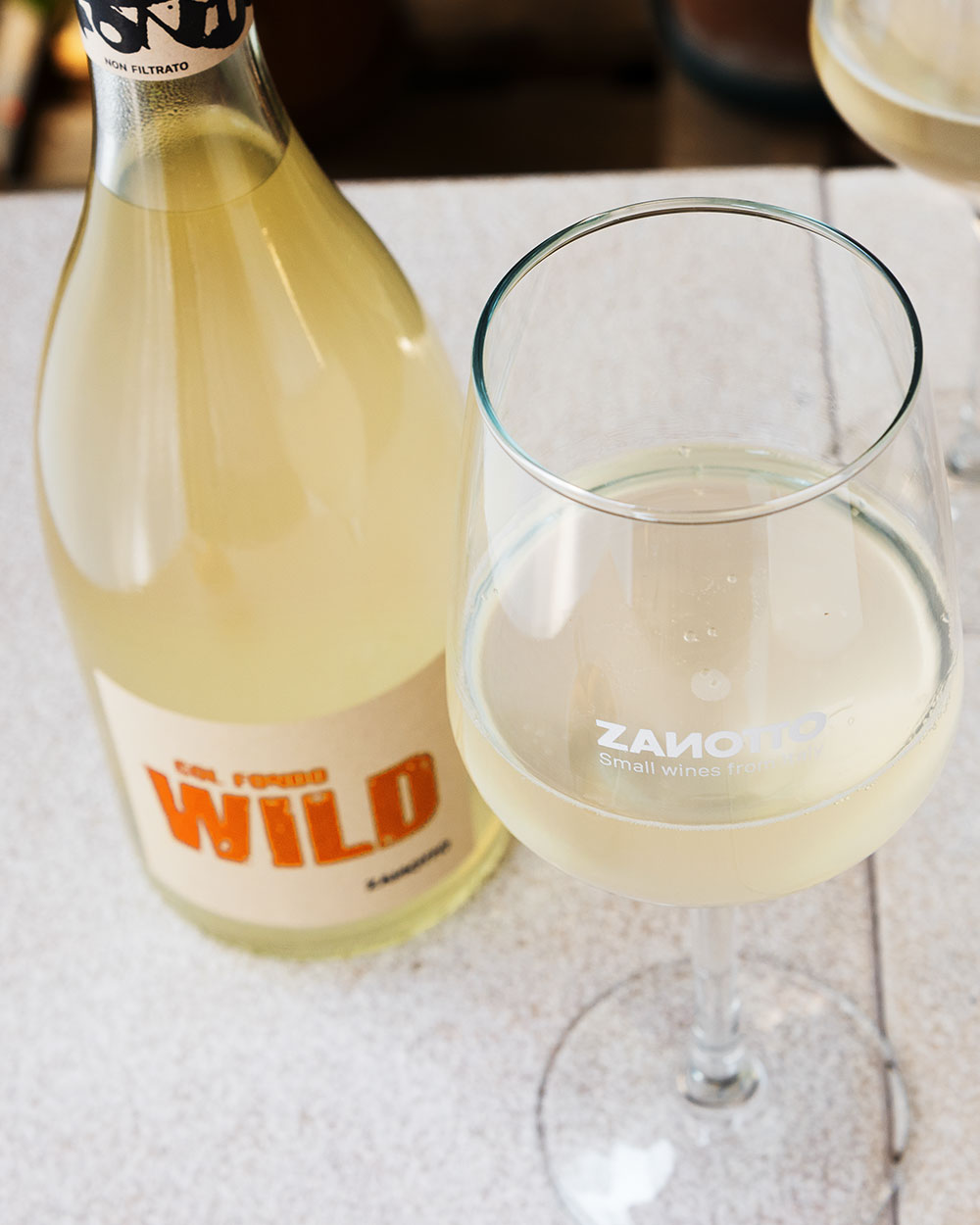Non sono presenti prodotti nel carrello.
Wild
Lightly-sparkling white wine
Second fermentation in the bottle
Ancestral method, unfiltered
11% vol – 750 ml
A wild and effusive wine, as you might understand from its name.
A bright yellow color, a folding fan of aromas which goes from apple to ripe pear. Pleasant perfumes of yellow fruit and crusts of bread.
The complexity as well as a strong mineralogy are always present.
A really unique lightly-sparkling wine in the world of unfiltered wines fermented in the bottle.
It can be enjoyed clear, leaving the yeasts settled at the bottom, or by gently turning the bottle to cloud the wine and enhance the intensity of the aromas.
Serving Temperature: 7° – 8° C
To learn more:
The secrets of “Col Fondo”: magic in a bottle.
Unfiltered Wines by Riccardo Zanotto
To learn more
The secrets of “Col Fondo”: magic in a bottle
“Col Fondo” is a sparkling wine that has its roots in an ancient tradition, a production method that respects the times of nature and enhances the authenticity of the product. But how does this magic in the bottle come about? Let’s find out together, taking our “WILD” as an example, a sparkling white that embodies the essence of this technique.
1. The Harvest and Primary Fermentation
It all begins with the harvest, the collection of ripe and sugar-rich grapes. These grapes are pressed and the resulting must is fermented in steel or cement tanks. In this phase, the yeasts transform the sugars into alcohol, giving life to the base wine.
2. Bottling and Refermentation
Once the primary fermentation is complete, the base wine is bottled with the addition of fresh must or yeasts and cane sugar. This “liqueur de tirage” triggers a second fermentation inside the bottle. During this process, the yeasts consume the sugars, producing carbon dioxide (the bubbles) and alcohol.
3. Rest on the Yeasts: Maturation and Complexity
The bottles are sealed with a crown cap and left to rest for a period ranging from two to three months or even several months for certain types of wine. During this time, the yeasts continue to work slowly, transforming the residual sugars into alcohol and carbon dioxide, and releasing compounds that enrich the wine with aromatic complexity and structure. The exhausted yeasts settle to the bottom of the bottle, forming the characteristic “lees”. This process, called autolysis, helps give “Col Fondo” its characteristic notes of bread crust, brioche and dried fruit.
4. No Disgorging
Unlike the classic method, “Col Fondo” does not require disgorging, the removal of the lees. The wine is marketed with its sediment, which contributes to its aromatic complexity and structure.
5. Tasting: a Unique Experience
“Col Fondo” can be tasted in two ways:
Clear: By gently pouring the wine into a carafe, you can separate the clear part from the sediment, obtaining a fresh and fruity wine, like our “WILD” when you want to enhance its notes of ripe apple and pear notes.
Veiled: By gently shaking the bottle, the yeasts are put back into suspension, obtaining a more intense and complex wine, with aromas of bread crust and greater minerality, like “WILD” in its “wilder” version.
The “Wild” Nature
“WILD” is a “Col Fondo” that stands out for its freshness and youth, an authentic expression of the territory and the vines used. The choice of yeasts and the duration of refermentation have been carefully studied to preserve the fruity and floral notes, limiting the development of autolysis notes typical of the more mature “Col Fondo”, and making it a vibrant and immediate wine.
“Col Fondo” is a living wine, in continuous evolution, that gives unique emotions with every sip. An experience that celebrates nature and tradition, a sensory journey that starts from the earth and arrives directly in your glass.




